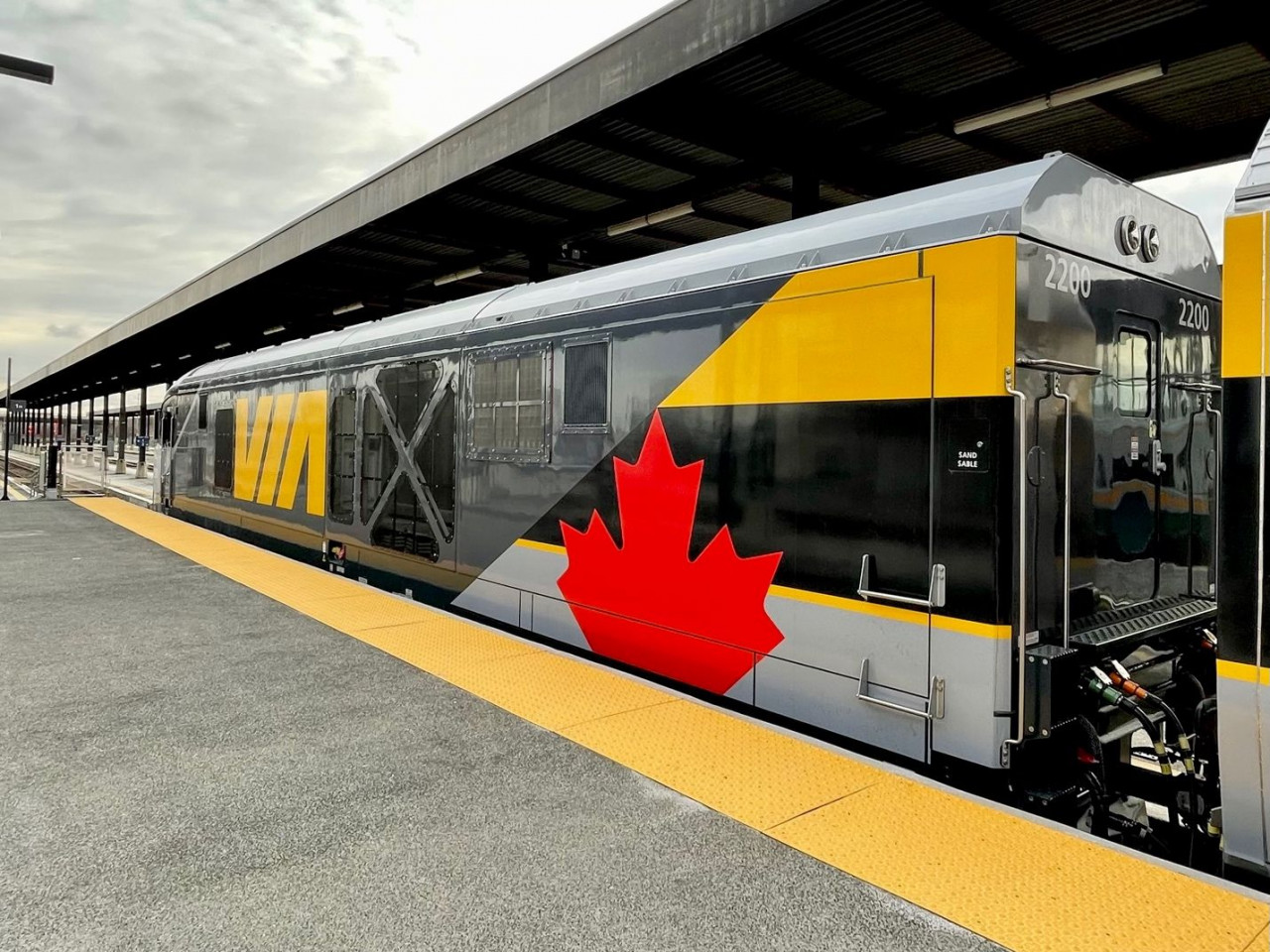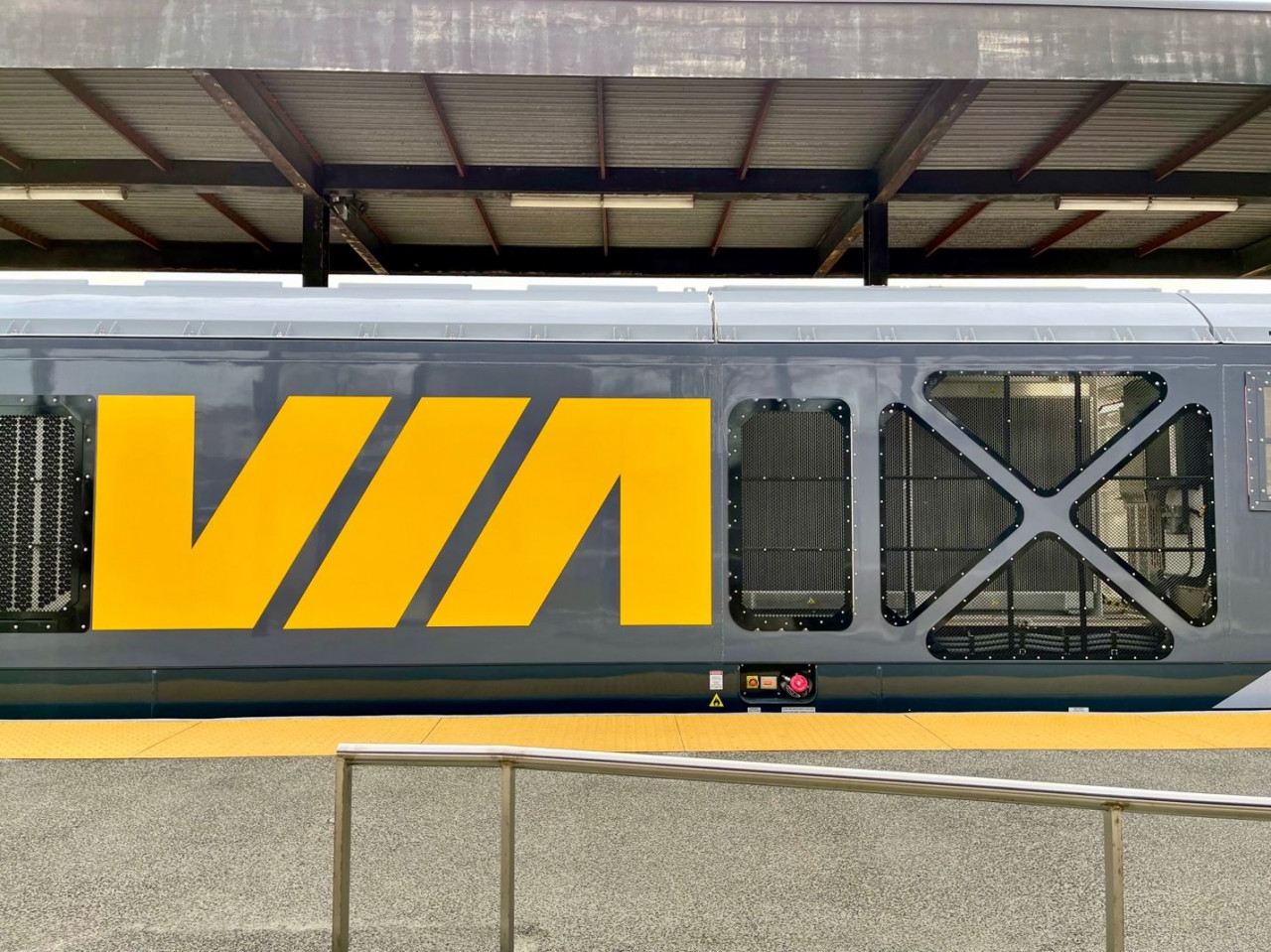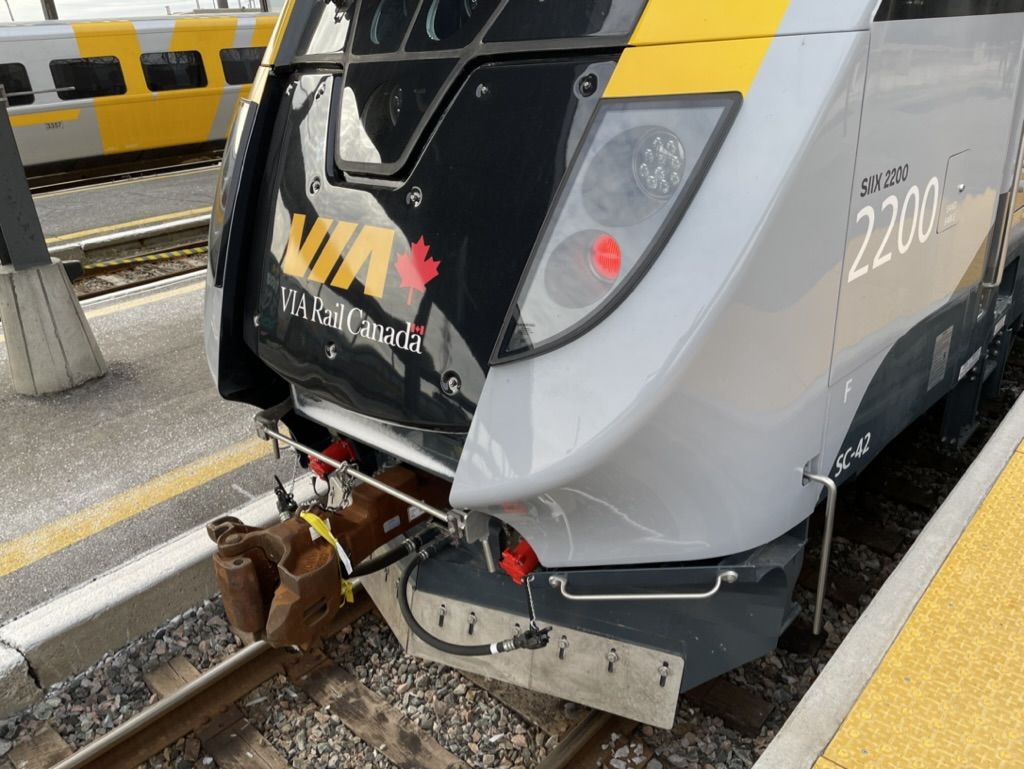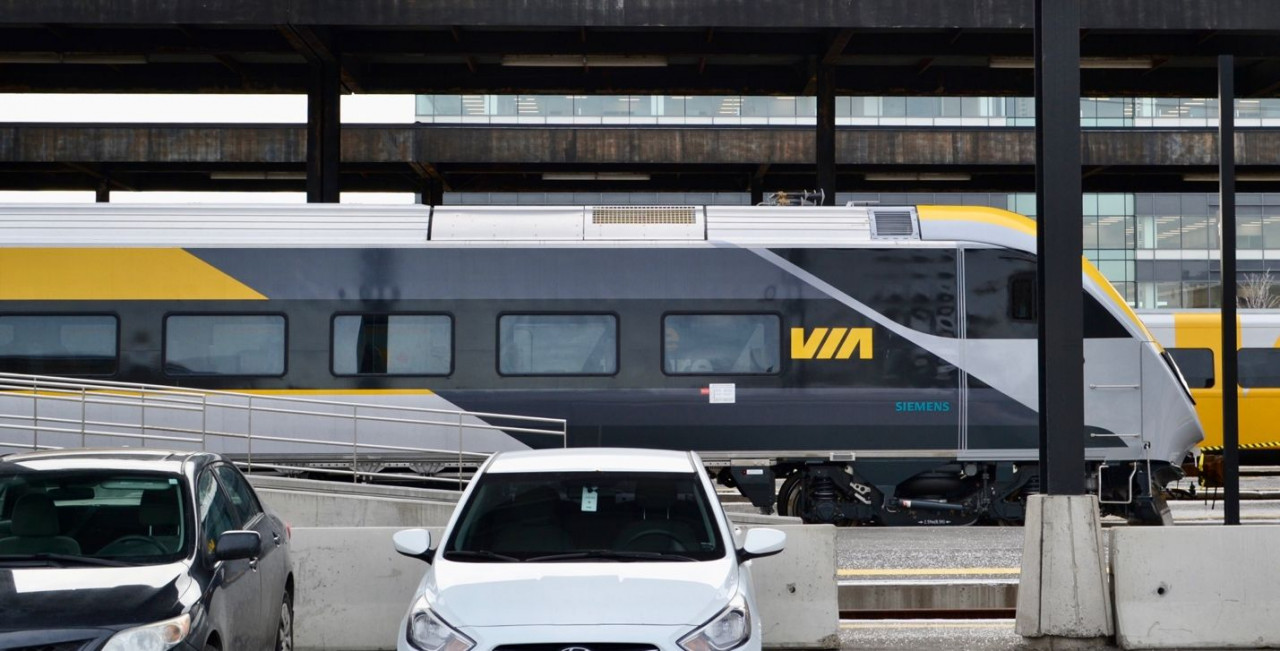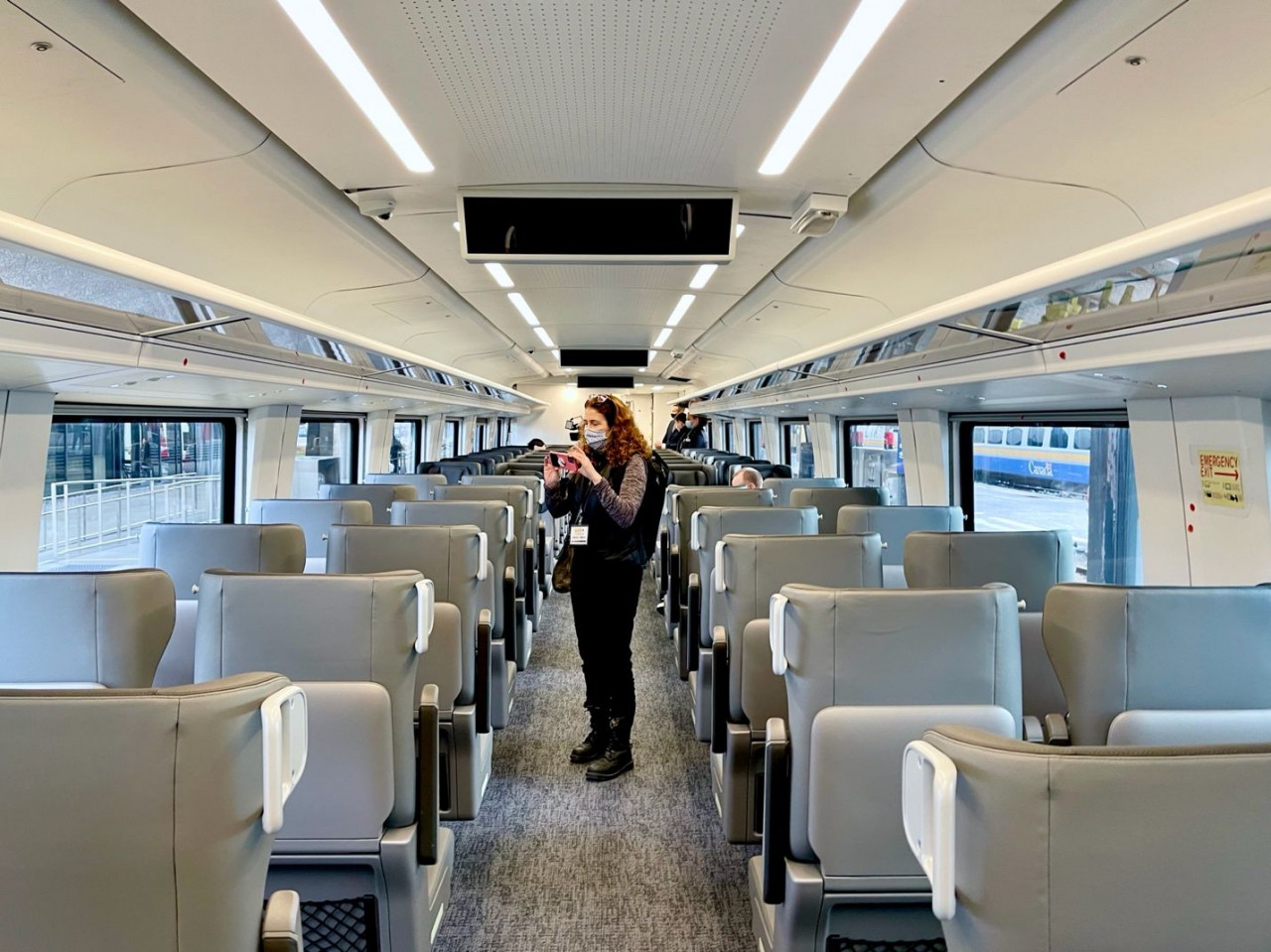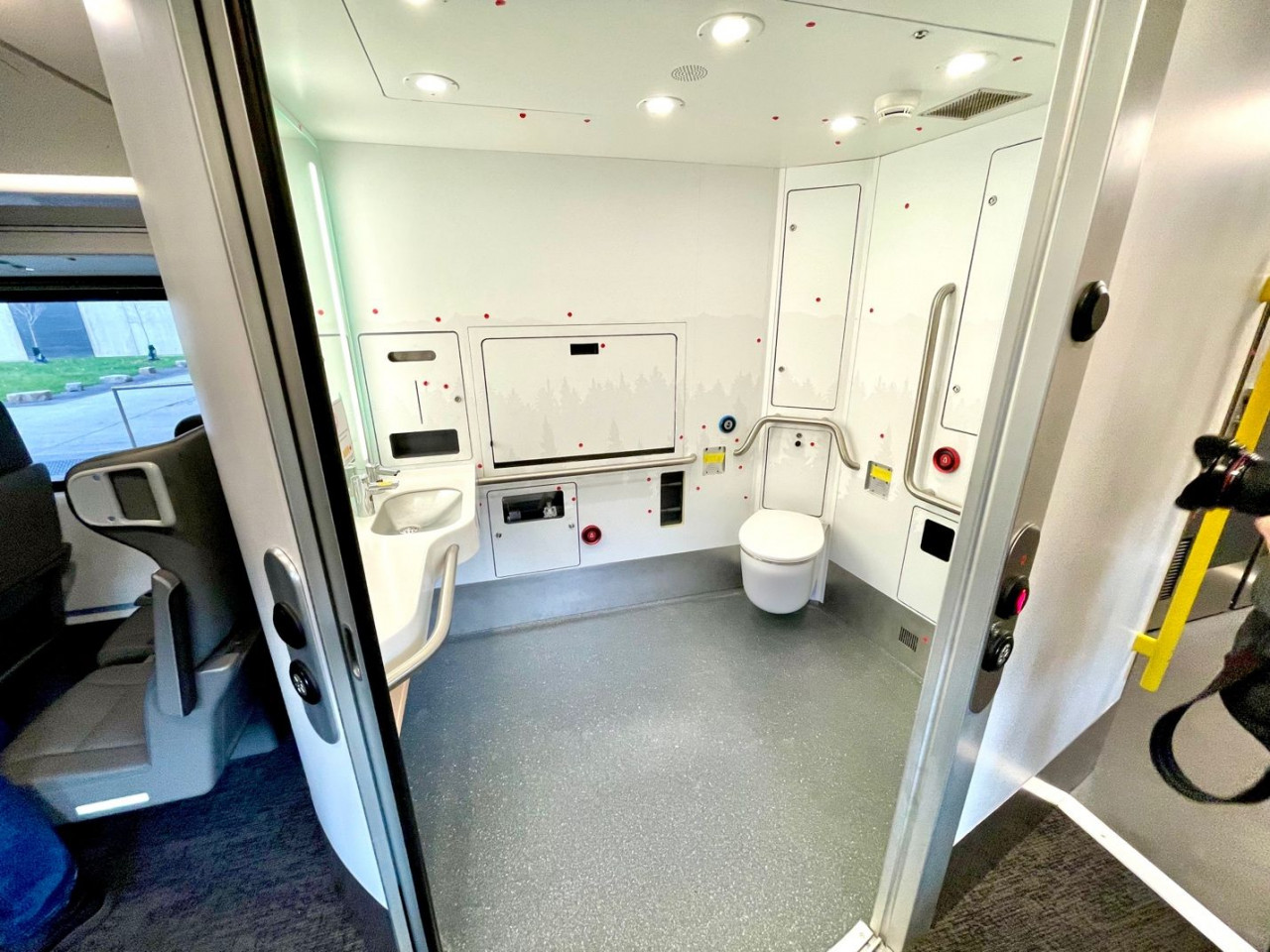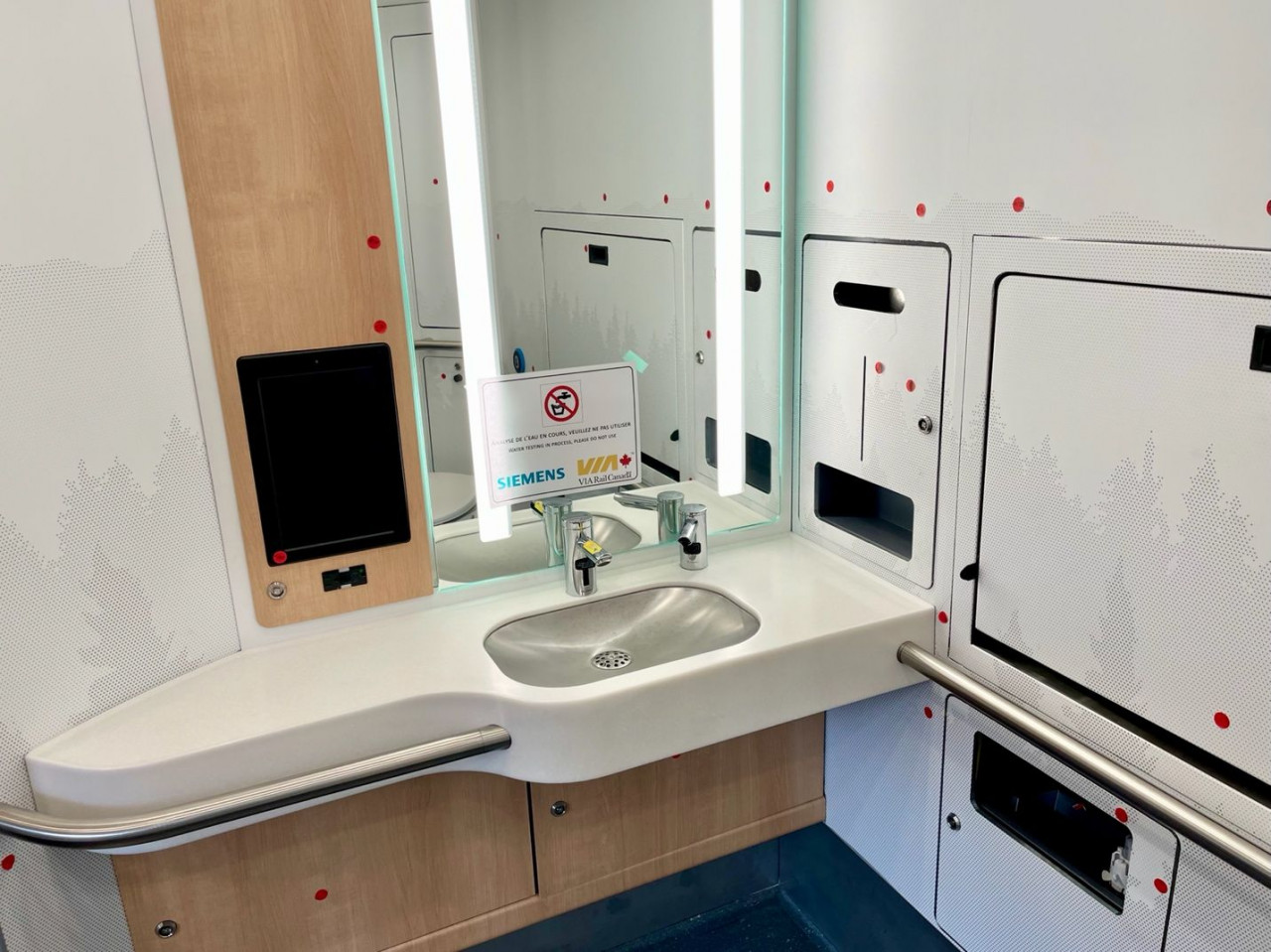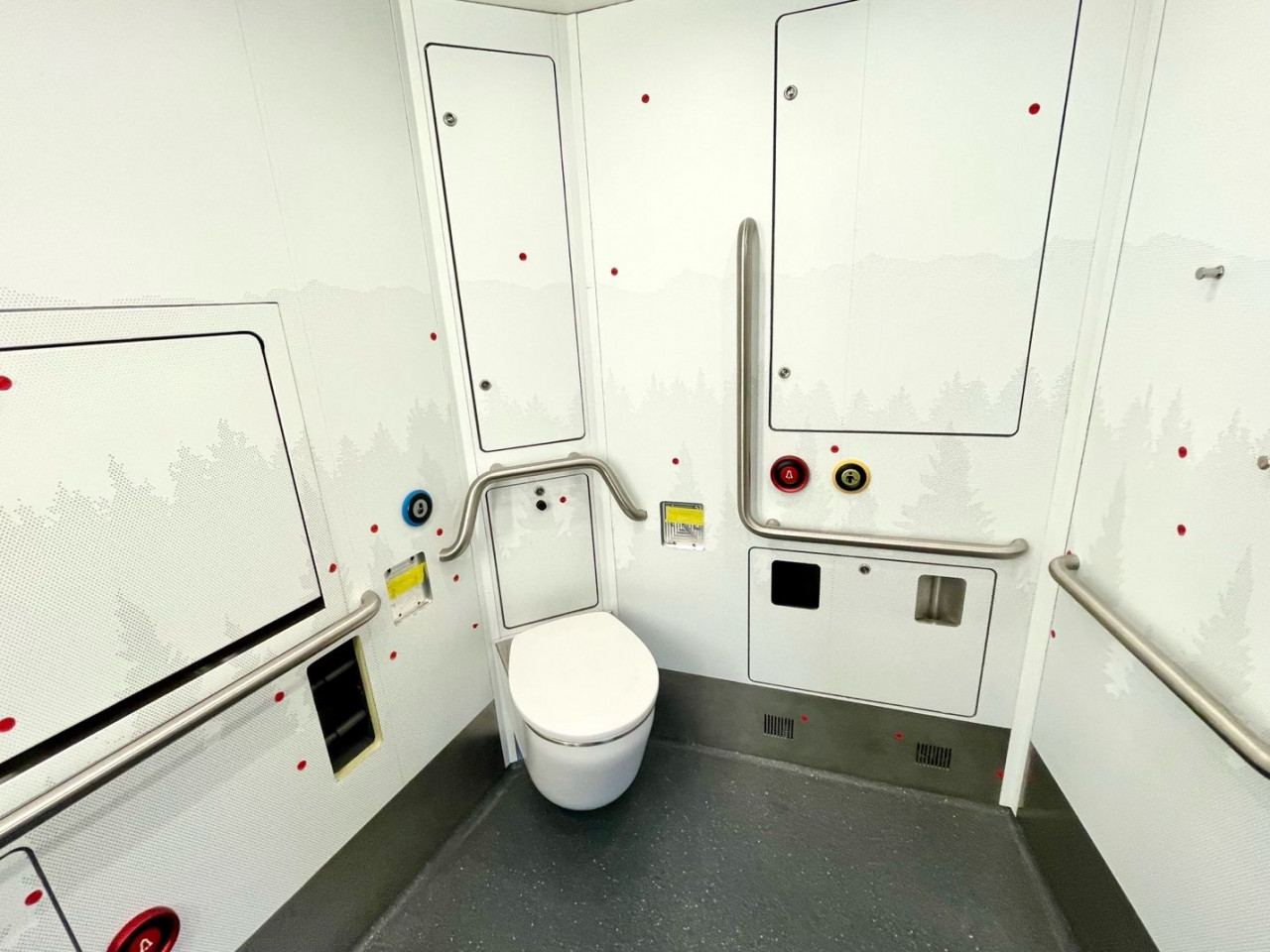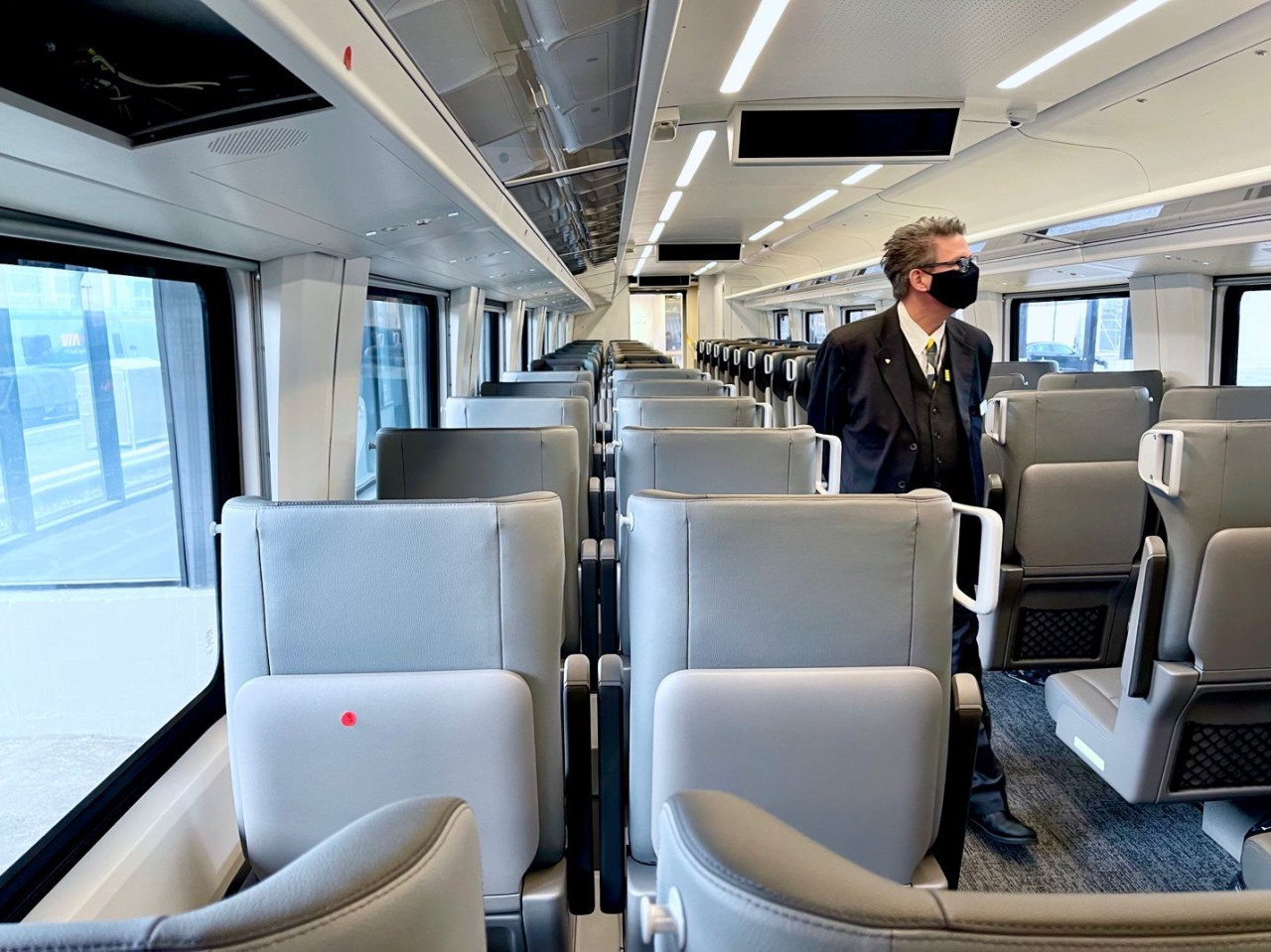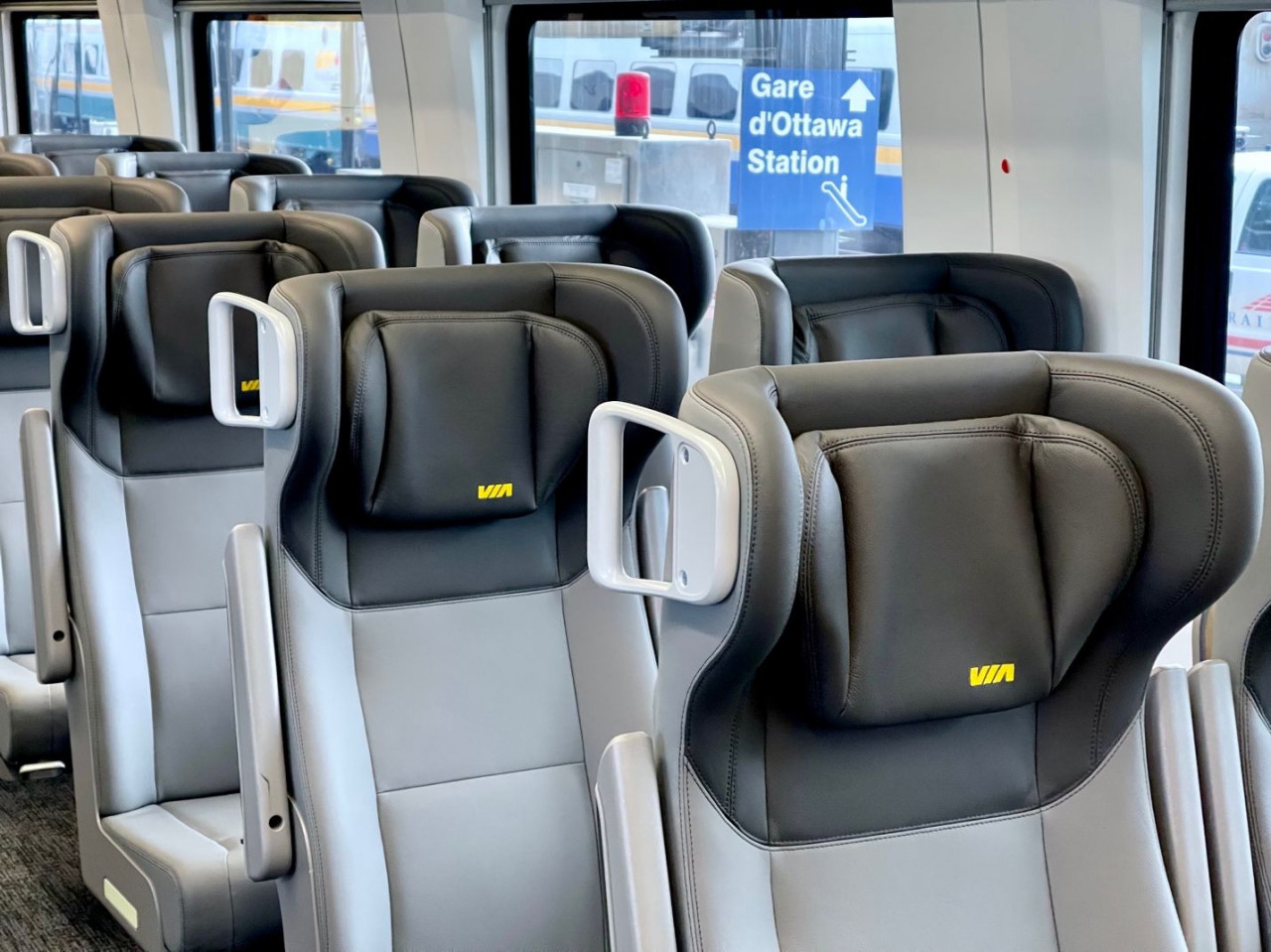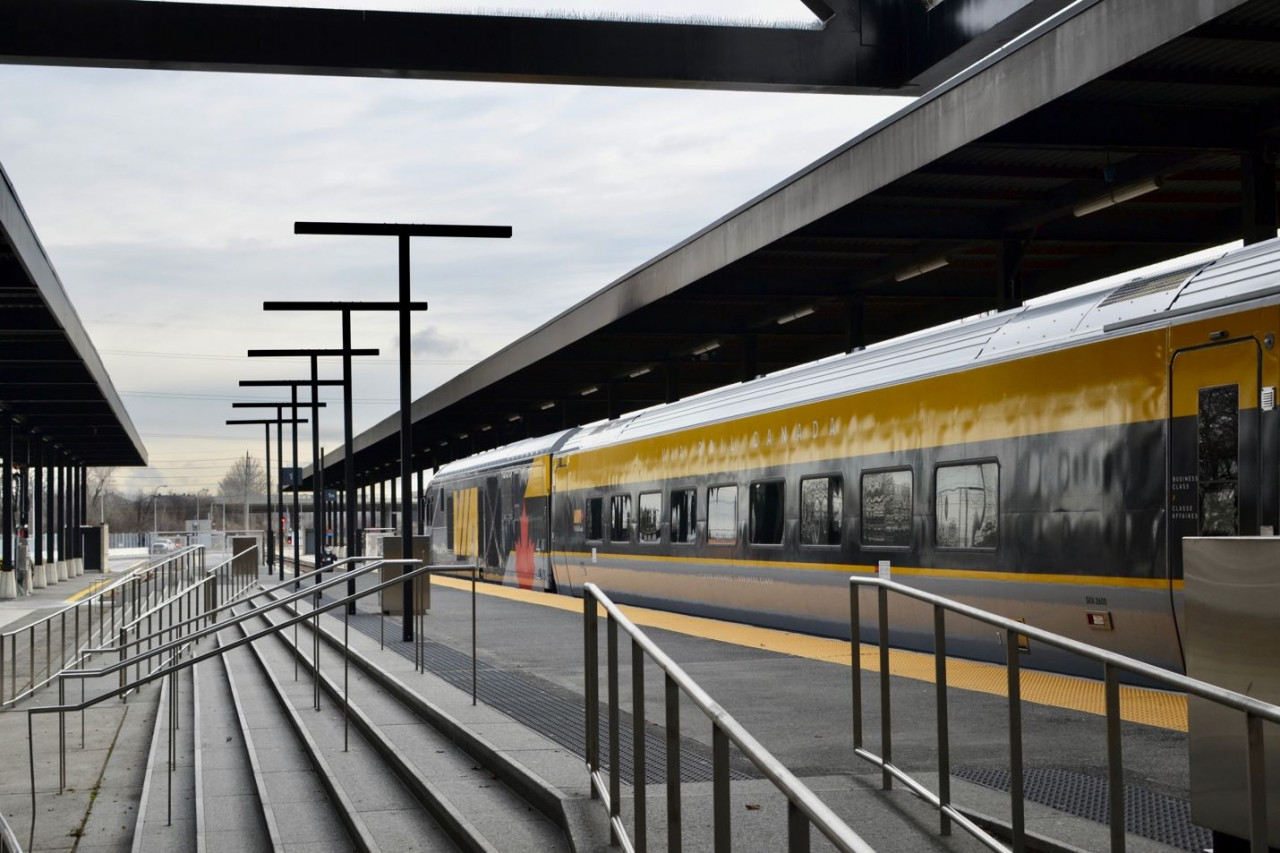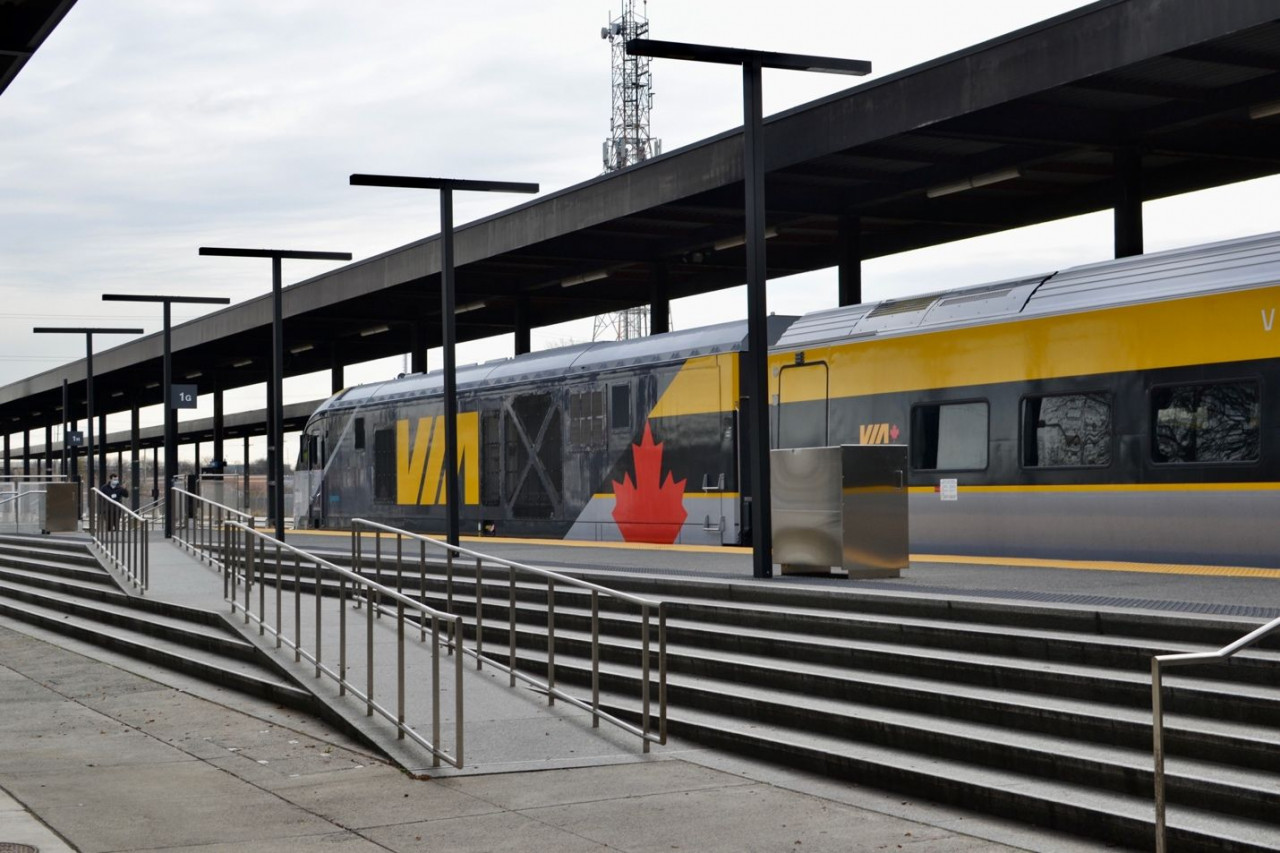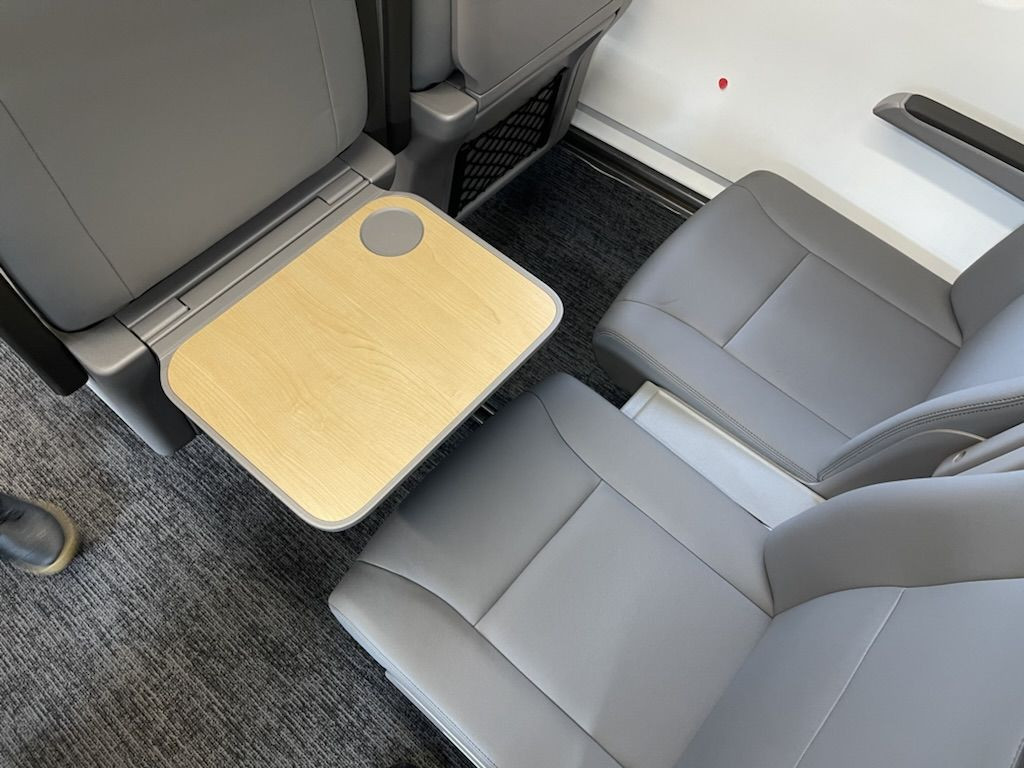A First Look at VIA Rail Canada’s New Fleet - Siemens SC-42
On November 30, 2021, Rail Fans Canada was invited to VIA Rail's Ottawa Tremblay Station to visit and discover the first brand-new trainset that will be part of the renewed Corridor fleet. Here is our detailed first look and overview of the new trains.
Background
Following the finalization of the contract with Siemens Canada in December 2018, Via Rail and their partners have been hard at work designing the "train of the future", which will replace the existing fleet of locomotives and passenger cars currently seen in the Corridor. Once completed, 32 bi-directional, fully accessible, and environmentally friendly trainsets will be ready to welcome the increasing number of passengers boarding Via Rail every year.
Produced by Siemens in Sacramento, California, trainset #1 is composed of locomotive 2200, 4 coaches and 1 cab car. The consist will be used to perform validation and certification tests for Via Rail over the coming year to ensure they are ready for regular service. The set is fully functional mechanically, but it is missing some finishing elements as they will be added during the validation process.
Testing will, for the most part, occur overnight between Les Coteaux and Ottawa Station, where the test team will be based (Via Rail owns the tracks on that segment). Once dynamic testing is more advanced, the trainset will go "on-tour" and travel throughout the Corridor to confirm and certify its ability to operate on the network and at each station.
Service is expected to start in Q4 2022, with the entire fleet delivered and in service by the end of 2024. Once in service, all the P42DC locomotives and LRC coaches are expected to be retired as they will reach their end of service life, with the rest of the Corridor fleet dispatched on other routes (essentially, the Renaissance coaches, F40 locomotives and HEP coaches.
Exterior
As part of this renewal comes a new livery for the trains, which is refreshing, to say the least! It offers a modern and sleek new visual appearance to match how modern the fleet is. The big and bold VIA lettering is back on the locomotive, accompanied by the maple leaf, recalling both the carrier and the country it serves. This new visual identity was developed as part of the Fleet Renewal Program, and you can expect to see more of it over the coming years.
Physically, the locomotive and carriages have a continuous streamlined design which results in a sleek-looking trainset. For passengers, the most notable feature will be the boarding door screens, which will allow passengers to identify their carriage and train more easily in busier stations, in addition to the more modern look and clean appearance throughout!
Overall, the design marks a sharp departure from the existing design seen throughout Via's fleet, more closely matching their desire to be seen as modern, sleek, and efficient. The trainset itself also looks modern with its continuous design from an end to the other, regardless of how many coaches are in the consist.
Technical and Operational
Trainset #1 is what Via Rail describes as their "Long trainset" configuration:
- 1 locomotive (Siemens Charger SC-42)
- 4 coaches (2x business coaches, 2x economy)
- 1 cab car (economy configuration)
In normal operation, the trainset will operate in the following configurations, all of them with a locomotive and cab car (all cab cars will be in an economy configuration). If needed, trainsets can be combined using the coupling found at either end, for additional tractive effort.
- Extra-Short: 2 coaches (1x economy, 1x business) + 1 cab car
- Short: 3 coaches (2x economy, 1x business) + 1 cab car
- Extra Long: 6 coaches (4x economy, 2x business) + 1 cab car
Cab cars (Economy 4A) are a new important element for Via Rail, as they will allow trains to be entirely bi-directional, eliminating the need to turn around trains at their destination. The cab is entirely isolated from the economy seating, ensuring privacy for the conductor.
While the locomotive remains diesel-electric, the new sets are also considerably more energy-efficient and meet the most stringent environmental regulations. In diesel operation, they are fully compliant with EPA Tier 4 regulations, use Diesel Exhaust Fluid (DEF, to reduce nitrogen oxide emissions) and regenerative braking, which will convert the kinetic energy into power for the onboard equipment and lighting, reducing the reliance on HEP. This allows for the trains to essentially consume less diesel, reducing costs and benefiting the environment. In the future, those trains can also be adapted to operate in both diesel-electric and fully electric operation, as infrastructure evolves. In either mode, the trains should offer a quieter, more comfortable ride to passengers than the existing equipment. The trains are also equipped with an air spring suspension which should also help reduce vibration and noise throughout the train.
To ensure increased reliability and easier maintenance for Via Rail, the trainsets are equipped with over 5000 different sensors to monitor and diagnose variation in performance, comfort, and operations, relaying the information both to the train conductor and Via's control centre where preventive and proactive maintenance efforts will be coordinated to ensure the highest standards in service, even before a serious issue occurs. This also benefits from the common platform used by the locomotives and coaches, which is seen internationally and has a proven track record.
Siemens and Via Rail have made every effort to ensure the trains are ready to face the tough winters we are used to in Canada. To improve comfort, windows are double-glazed, extra insulation is used throughout to reduce heat loss. Snowplows are equipped on either end of the train to clear accumulating snow. Like other trains operating in Canada, sandboxes are installed throughout to assist tractive efforts in slippery situations.
Interior / Passenger Features
Before we get started with the passenger-oriented elements, do not forget that this trainset is a testing platform for Via Rail, and therefore is missing some of the elements that will be present following their introduction. Note that during this first look we did not have the opportunity to explore the business coach, only one in the economy configuration. We will highlight the differences as we go along.
The interior is a stark departure from Via's current fleet and matches the modern and sleek appearance seen outside. It is a bright, easy-to-navigate environment with ample space for passengers and staff. Economy cars are configured in a 2-2 layout, while business cars have a 2-1 layout. All cars have a 50/50 forward and rear-facing layout, allowing for some quad seating arrangements in all coaches. The colour palette used throughout the train is identical between both classes: birch wood accents, white and grey. This reinforces the modern look of the coaches. Business coaches will also have a semi-private meeting space, which will allow passengers to have meetings in a quieter environment.
Seat Capacity (Long Trainset Configuration)
- Economy: 194 seats
- Business: 87 seats
All seats are upholstered in leather, can recline, have a large and solid folding table (quad seats get an extendable table that can be folded back into the form seen below to enable easy access), adjustable headrest, LED reading lights, power outlets (economy seats each get 1 USB, 1 120V outlet, while business seats get 2 of each) and two armrests for each seat. Business-class seats are also equipped with a footrest and will have more legroom than in economy. Most seats will have windows (with drop-down shades, not fully opaque, enough to block most outside light), some will either have partial windows and very few will not have a window (specifically the seats at the end of the carriage opposite to the bathroom. This might become a consideration for passengers when choosing their seats as everyone's preference might differ.
For the short time we had on the train, I found them to be quite comfortable and form-fitting, with ample recline to comfortably sit. The backrest offers a lot of support while the cushion should support someone properly over longer trips. Of course, the real test will be on longer journeys, such as the 5 to 6 hours trip between Ottawa and Quebec City.
Since the cabin is brand-new, we also get modern conveniences and upgrades versus what is seen in current equipment. All coaches will feature both visual and audio announcement systems: current announcements on many routes are done by the train director, the new PA will allow for automated announcements, in French and English, as well as personalized announcements based on operational needs. In addition to those, there will also be on-board CCTV and fire alarms throughout the train to ensure the safety of passengers and staff.
From a more functional perspective, onboard Wi-Fi equipment will have more access points and redundancy to improve the speed of the connection. Given that it relies on a cellular signal, there will remain areas with lower signal quality that will degrade the Wi-Fi performance. Storage space can be found above and below the seats, in addition to the more flexible storage racks found at the coach's end. This will allow for bikes and longer objects to be stored as the shelves can be folded as needed, either in full or partially, without needing a luggage car.
The washrooms are also fully accessible and feature an electronic door and locking mechanism, as well as emergency and assistance buttons near the toilet and at floor level in the event of a fall. There is ample space for passengers with reduced mobility to maneuver and use all the features in the lavatory, especially compared to current equipment. There will also be a display in each washroom that will provide information such as the current time, next stop, and service announcements. I cannot think of another place where you will find such spacious bathrooms that can accommodate the needs of all passengers.
Once again, it is worth pointing out that the trains are fully accessible, and every effort was made to reduce barriers to travel for people with reduced mobility. Consultations were made with various groups to ensure it was a seamless experience for all customers, including a full-size carriage mock-up. The coaches have built-in electric wheelchair lifts for stations with low platforms, and the alley in the carriage has been widened enough so that users with reduced mobility can easily navigate throughout the train without any step or obstacle (minimum width of 69.6 cm throughout, 27.4 inches). Compared to the current coaches, additional mobility aid seats have been added, which feature an adjustable height table, jump seat (for a travel companion) and assistance call button at each seat. All seats will have raised lettering for seat identification and braille.
The "Hidden" Side of Things
In addition to improving the customer experience on board, the new trains are also a treat for the onboard staff. The train was also designed to meet the evolving needs of their role as Via Rail continues to emphasize its customer service experience. The larger alley now gives enough space for two carts to be moved around the carriage at the same time, but also for passengers to move at the same time. Galleys in Business and Economy have been widened with additional space for carts and the equipment needed, as well as locked storage for the staff. Business and economy coaches will also have drinkable, filtered tap water to allow passengers to refill their bottles and reduce the need for plastic water bottles, which also eases the work of staff. Trash cans are also now separated into recycling, composting and garbage to ease the cleaning effort and divert as much waste as possible.
From the short time I had to discuss with the on-board staff showing us the new coach, it was clear that they are all looking forward to working in those brand-new spaces that are more suitable for the work they do. You can tell there is a lot of excitement regarding the new trains shared by all teams at Via Rail and Siemens, and it is totally understandable the moment you board the new trains.
David's Take
Overall, I am quite pleased and excited to see what the future will look like on Via Rail. New and modern equipment has been on the wish list of users for a long time, and it is nice to finally see it happen, using such a high-quality product. Via and Siemens clearly listened to the customer feedback by offering a modern space for them to spend time, to be productive or simply enjoy the views. The product seems of high quality and offers modern amenities that were not seen before onboard Via Rail. Of course, this is only a first impression, and we will need to see them in service to get a better sense of how they are.
It is truly a case of "better late than never": you can renovate the older coaches as much as you want, they remain an older design that will bring a lot of difficulties with it. The Siemens Charger / Venture combination is one with a proven track record that allows Via Rail to replace their entire Corridor fleet in one opportunity. While there are numerous institutional and political reasons why it took so long, it remains a net positive for customers and an essential step towards the implementation of HFR. I do hope it ultimately stimulates demand in the Corridor, pleasing both existing and new customers along the way.
I am looking forward to an opportunity to travel on those new trains, hopefully before the end of 2022.
Additional Photos
VIA Rail Canada - Technical Facts sheet
